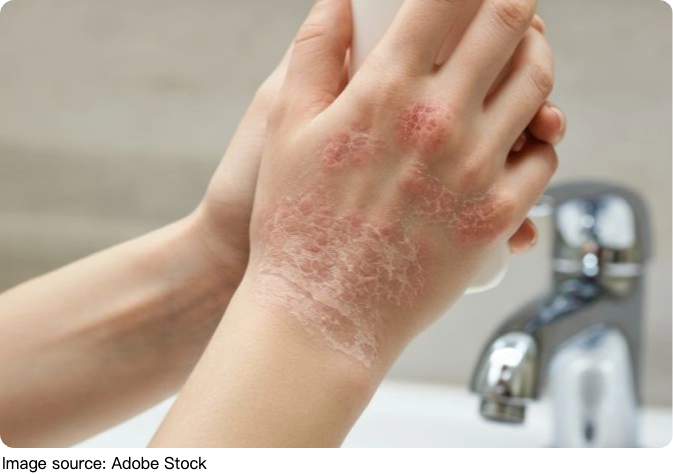Immunology Behind Eczema

Eczema, clinically known as atopic dermatitis (AD), is more than just a skin condition, it represents a sophisticated interplay between genetic predisposition, environmental triggers, and immune system dysregulation.
Recent advances in immunology have shed light on the intricate cellular and molecular pathways driving this chronic inflammatory disease, offering new avenues for targeted therapies.
The Epidermal Barrier: The First Line of Defense and Its Dysfunction
A hallmark of eczema is a defective skin barrier, primarily due to mutations in key structural proteins such as filaggrin (FLG) and claudin-1 (CLDN1). This compromised barrier leads to increased transepidermal water loss and heightened vulnerability to allergens, microbes, and irritants.
Dr. Sarah Thompson, a dermatologist specializing in inflammatory skin diseases, notes, "Barrier disruption is the gateway for allergens and pathogens, setting off a cascade of immune responses that perpetuate eczema."
The Th2-Dominant Immune Response: Central to Acute Eczema
At the core of eczema's immunopathology lies a dominant T helper 2 (Th2) cell response. Upon activation by dendritic cells presenting allergens, Th2 cells produce cytokines such as interleukin-4 (IL-4), IL-5, IL-13, and IL-31. These cytokines drive immunoglobulin E (IgE)-mediated hypersensitivity, eosinophil recruitment, and pruritus (itching).
IL-4 and IL-13, in particular, not only amplify inflammation but also further impair the skin barrier by downregulating filaggrin and other structural proteins. This creates a vicious cycle of barrier dysfunction and immune activation. Dr. Michael Greene, an immunologist, explains, "Targeting IL-4 and IL-13 pathways has revolutionized eczema treatment, highlighting their pivotal role in disease pathogenesis."
Beyond Th2: The Role of Th1, Th17, and Regulatory T Cells
While Th2 cells dominate the acute phase, chronic eczema exhibits a more complex immune milieu. T helper 1 (Th1) cells become more prominent in prolonged disease, contributing to sustained inflammation through interferon-gamma production. Th17 cells, known for their role in extracellular pathogen defense, infiltrate severe eczema lesions and secrete IL-17, which promotes keratinocyte activation and neutrophil recruitment.
Regulatory T cells (Tregs), which normally suppress excessive immune responses, show altered function in eczema. Their dysregulation may fail to control inflammation adequately, exacerbating disease severity.
The Skin Microbiome and Immune Interactions
Eczema skin is often colonized by Staphylococcus aureus, which exacerbates inflammation by interacting with keratinocytes and immune receptors such as Toll-like receptor 2 (TLR2). This interaction triggers innate immune responses and further disrupts the barrier.
Intriguingly, beneficial microbes like Staphylococcus epidermidis produce metabolites such as butyric acid that modulate epigenetic mechanisms, specifically histone acetylation to suppress S. aureus growth and inflammation. These findings open promising therapeutic avenues targeting the microbiome-immune axis.

Integrating the "Outside-In" and "Inside-Out" Hypotheses
Current understanding integrates two previously competing hypotheses: the "outside-in" model, where barrier dysfunction initiates immune activation, and the "inside-out" model, where immune dysregulation leads to barrier impairment. The interplay between these mechanisms orchestrates the chronicity and heterogeneity of eczema.
Clinical Implications and Emerging Therapies
Recognizing the immunological complexity of eczema has spurred the development of targeted biologics and small molecules that inhibit specific cytokines and signaling pathways. Dupilumab, an IL-4 receptor alpha antagonist, exemplifies this approach, significantly improving outcomes by dampening Th2-driven inflammation.
Future therapies aim to modulate other immune axes, restore barrier integrity, and rebalance the skin microbiome, offering hope for personalized eczema management.
Eczema's immunology is a multifaceted network involving barrier defects, innate and adaptive immune responses, and microbial interactions. As Dr. Sarah Thompson summarizes, "Understanding the immune underpinnings of eczema transforms it from a mere skin disorder into a systemic immunological condition, guiding more precise and effective treatments."
Ongoing research continues to unravel this complexity, promising improved quality of life for millions affected worldwide.
-
 Must-Have Iconic PalettesReady For Flawless Looks? These Timeless Palettes Will Change Your Makeup Game Forever! Try Now!
Must-Have Iconic PalettesReady For Flawless Looks? These Timeless Palettes Will Change Your Makeup Game Forever! Try Now! -
 Skye's Hidden Trail SecretsMost tourists miss these spots—don't make that mistake on the Isle of Skye!
Skye's Hidden Trail SecretsMost tourists miss these spots—don't make that mistake on the Isle of Skye! -
 Dreamy Bedtime Scents!Want To Feel Cozy & Calm Tonight? These Soft, Sweet Scents Are Perfect For Your Sleep Ritual! Try Them Now!
Dreamy Bedtime Scents!Want To Feel Cozy & Calm Tonight? These Soft, Sweet Scents Are Perfect For Your Sleep Ritual! Try Them Now!